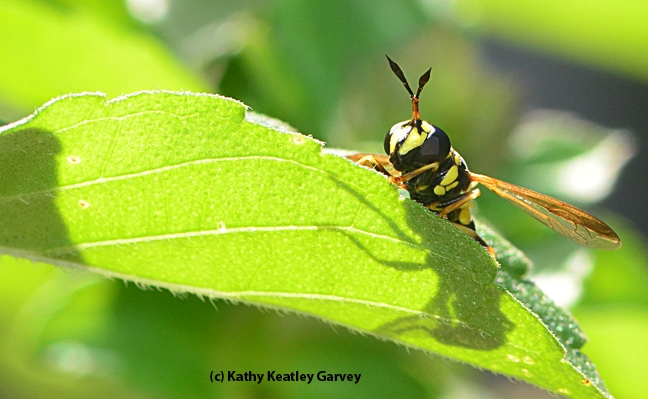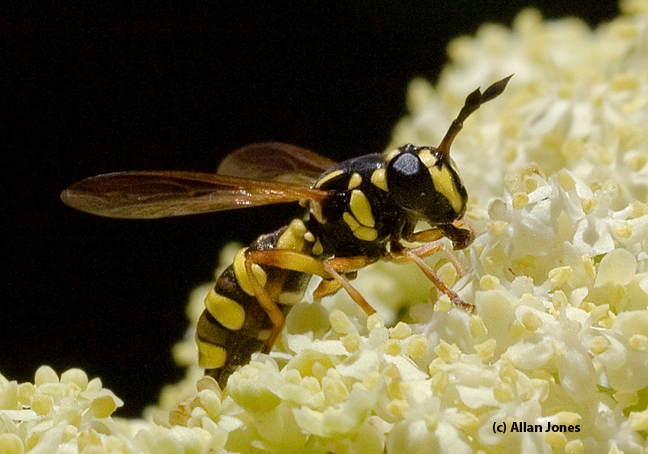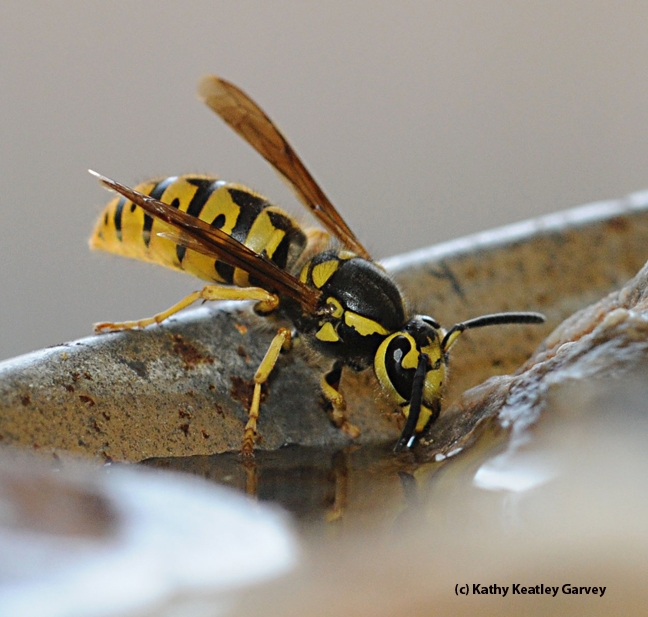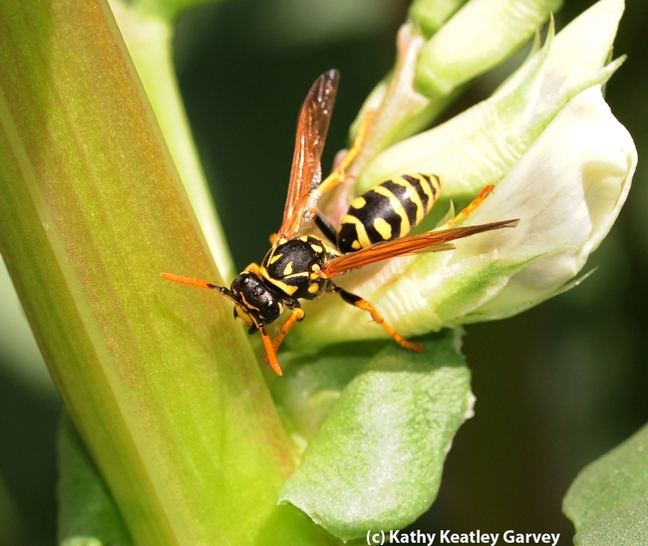Last weekend a little critter made its first-ever appearance in our family bee garden. It was neither a grand entrance nor a grand insect.
"A fly!" I thought, as I looked at its knoblike bristle or arista on the end of each antenna.
But its body--what little I could see of it before it winged out of there--definitely resembled a wasp. A Western yellowjacket (Vespula pensylvanica) or European paper wasp (Polistes dominula).
Native pollinator specialist Robbin Thorp, emeritus professor of entomology at the UC Davis Department of Entomology and Nematology, identified it as a syrphid fly, genus Ceriana, family Syrphidae.
Talented Davis photographer Allan Jones captured an excellent photo of Ceriana in 2012. A full body shot: head, thorax and abdomen! His excellent image (second one, below) shows the distinguishing characteristics: two wings (fly), not four wings (bees, wasps), as well as the arista (fly) and the spongelike mouthparts (fly).
BugGuide.Net posted some excellent images of Ceriana on its site. Class: Insecta. Order, Diptera. Family: Syrphidae: Genus: Ceriana.
Ceriana is a genus of wasp mimics. Basically, it's a syrphid fly, a pollinator. It's also known as a hover fly or flower fly as it hovers, helicopterlike, over flowers before drops down to forage.
Would-be predators, no doubt, avoid Ceriana because of its coloration. "Oops, don't mess with that! That's a wasp!"
Picnickers who don't know a faux wasp from a real one would probably run from it, or swat at it.
"It's definitely a good mimic and probably gets a lot of protection from that coloration," said Lynn Kimsey, director of the Bohart Museum of Entomology and professor of entomology at UC Davis.
So true!
Attached Images:

This wasp mimic is actually a fly, genus Ceriana. (Photo by Kathy Keatley Garvey)

Davis photographer Allan Jones captured this fantastic image of the wasp mimic, Ceriana. (Photo by Kathy Keatley Garvey)

This is a Western yellowjacket, Vespula pensylvanic, which looks a lot like the wasp mimic, genus Ceriana. (Photo by Kathy Keatley Garvey)

This is a European paper wasp, Polistes dominula. A syrphid fly mimics this. (Photo by Kathy Keatley Garvey)